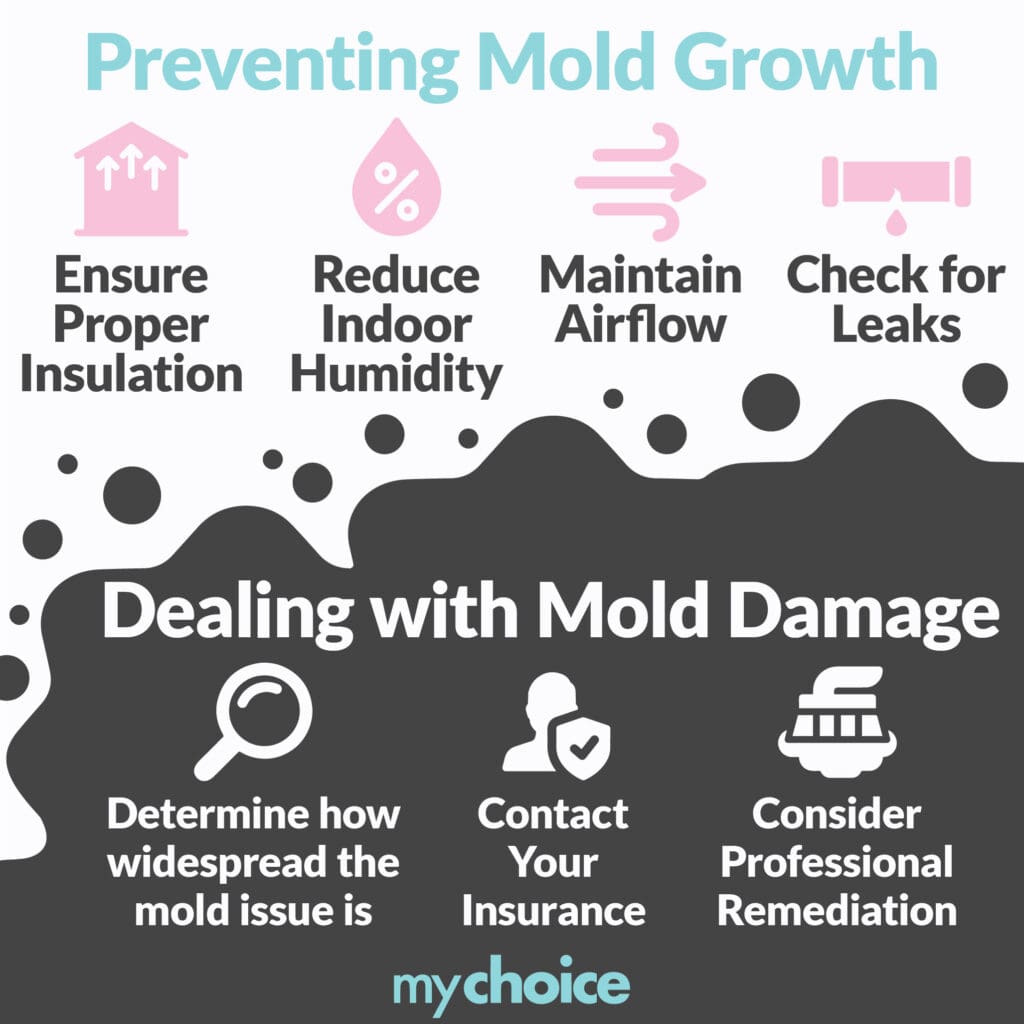Mold infestations are a common concern for homeowners in Canada. Not only can mold cause significant structural damage to your home, but it can also pose serious health risks. The big question on many homeowners’ minds is: does home insurance cover mold infestations?
Understanding Mold and Its Impact
Mold is a natural part of our environment. It’s a type of fungus that grows on damp materials and is related to yeast, mushrooms, and other fungi. While it plays a crucial role in breaking down organic matter in nature, it’s not something you want growing in your home. Mold can produce potentially harmful substances called mycotoxins, which can trigger allergic reactions or hypersensitivity diseases in people. Moreover, mold can lead to rotting wood components of buildings, tiles, drywall, and carpets.
Does Home Insurance Cover Mold?
The coverage for mold damage in your home insurance policy largely depends on the source of the mold. Here’s what you need to know:
- Basic Coverage: A standard homeowner insurance policy typically excludes damage caused by mold growth. However, if the mold growth can be associated with a covered peril, such as a burst pipe or storm damage, then the resulting mold damage might be covered.
- Source of Moisture: Coverage is mainly dependent on the source of the moisture and the cause of the growth. For instance, mold resulting from a preventable water leak, flooding, or high humidity might not be covered.
- Additional Coverage: Some insurance companies offer additional mold coverage for an added cost. This can be beneficial if you live in an area prone to moisture or have had mold issues in the past.
To get a clearer picture of how mold coverage might impact your insurance premiums, you might want to check our article on the price of home insurance in Ontario.
Mold and Insurance Claims
When mold results from a covered peril, such as a storm or burst pipe, your insurance might help with the removal and remediation. However, if mold growth has been present for an extended period due to neglect or lack of maintenance, insurance claims are often rejected. It’s essential to promptly address mold and water damage issues to ensure they are covered.
Renters and Mold
For those who rent, tenant insurance might cover mold damage, but only if it’s the result of a covered peril. Mold resulting from poor maintenance or negligence typically won’t be covered.
Preventing Mold Growth
Prevention is the best defence against mold. Here are some steps you can take:
- Reduce Indoor Humidity: Use dehumidifiers and ensure exhaust fans in bathrooms are functioning and venting outside.
- Ensure Proper Insulation: Check your attic and walls for adequate insulation.
- Maintain Airflow: Ensure there’s sufficient airflow throughout your home, especially in areas prone to moisture.
- Check for Leaks: Regularly inspect your home for leaks, especially in the roof, walls, and foundation.
Dealing with Mold Damage
If you discover mold in your home:
- Assess the Extent: Determine how widespread the mold issue is. Small areas might be manageable on your own, but larger infestations require professional intervention.
- Contact Your Insurance: If the mold is due to a covered peril, get in touch with your insurance provider to discuss the next steps.
- Professional Remediation: Consider hiring a professional mold remediation company, especially if the mold is extensive or if it’s in your home’s HVAC system.

Bottom Line
Mold can be a significant concern for homeowners regarding health risks and potential damage to the home. While home insurance might provide coverage in some cases, it’s essential to understand your policy and take steps to prevent mold growth. Regular maintenance, prompt attention to water damage, and additional mold coverage can help protect your home and your health.








